Auralization
This technology enables the prediction of acoustic characteristics of a design before its completion.
Existing methods for prediction are either scale-model measurements which are especially precise for
low frequency ranges, or computer simulation which is especially precise for high frequencies. However,
the hybrid auralization method takes advantage of the precisely predicted areas of each method.
The result are a high-accuracy acoustic prediction at all frequency ranges, and an accurate auralization
of the room. Hybrid auralization have been applied to predict, or auralize, the acoustics in the Tohoku
University Centennial Hall (Kawauchi Hagi Hall).
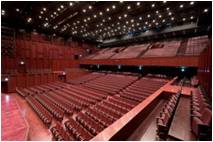
Fig.Kawauchi Hagi Hall
Tenth scale model measurements
A tenth scale model was constructed based on the hall's design plans,
and the tenth-scale dummy head was developed by a three dimensional laser scanning
device and a stereo-lithography modeling device.
This method's main advantage is its accuracy in low frequencies.
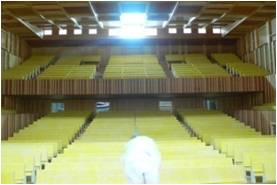

Fig.Tenth scale model and tenth-scale dummy head
Computer simulation
We compute a geometric acoustics simulation, assuming that a sound wave propagates like a ray.
This method's main advantage is its accuracy in high frequencies.
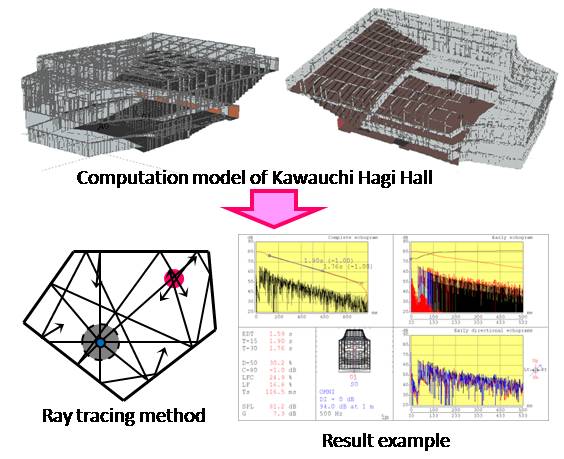
Fig.Computer simulation
Hybrid auralization
Hybrid impulse responses are synthesized from both scale-model measurements and computer simulation.
Low-frequency bands of Early Reflection are calculated using the tenth scale model measurements,
and High-frequency bands of Early Reflection are calculated by computer simulation.
Late Reverberation is calculated by Reverberation theory.
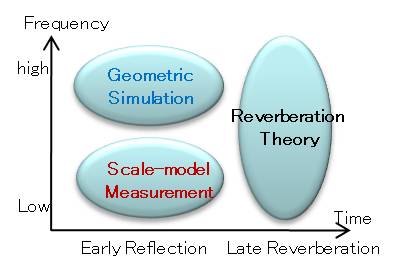
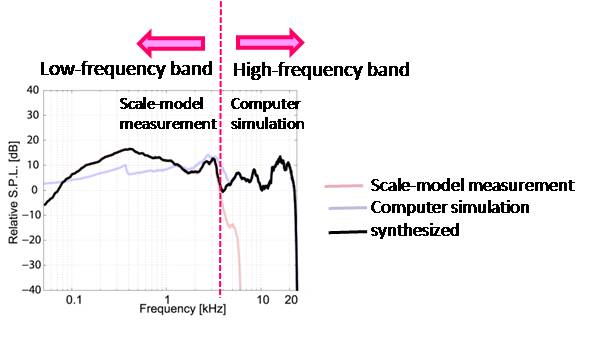
Fig.Summary of Hybrid auralization
|